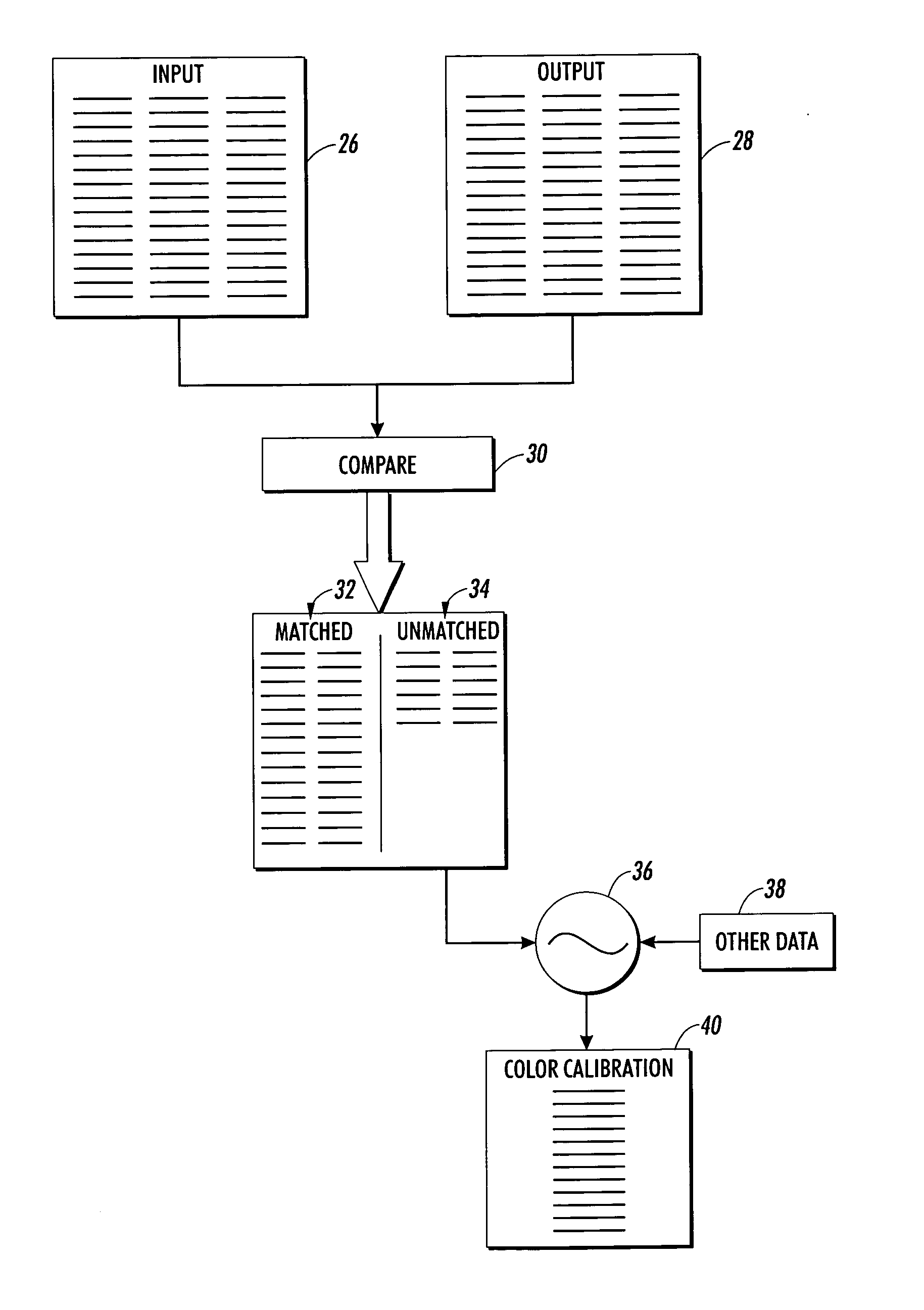Method for improved characterization of single-pass bi-directional printers
a color printer and calorimetric technology, applied in the direction of digitally marking record carriers, visual presentation using printers, instruments, etc., can solve the problems of color correction software coming up with identical combinations of primary colors, poor predictability, and inability to achieve the effect of achieving the effect of achieving uniform primary colors
- Summary
- Abstract
- Description
- Claims
- Application Information
AI Technical Summary
Benefits of technology
Problems solved by technology
Method used
Image
Examples
Embodiment Construction
[0019] What is presented is an improvement to the art of characterizing color reproduction in both directions. Characterization data is used to generate a separate profile for a primary (right-to-left) print direction and one for the secondary (left-to-right) print direction.
[0020] When rasterizing, the RIP uses the correct profile for each stream of raster data. As the output image is being rasterized by the rendering software, the software will generate the raster sets such that a set used to print in the right-to-left direction uses the right-to-left profiling data and vice-versa for sets to be printed in the opposite direction. As the method of the present invention keeps color differences between swaths within the limits of the amount of hue shift a human eye can detect, the outputs look virtually identical.
[0021] One skilled in this art would have an understanding of printer characterization processes and preferably experience performing the same.
[0022] Printer characteriza...
PUM
 Login to View More
Login to View More Abstract
Description
Claims
Application Information
 Login to View More
Login to View More - R&D
- Intellectual Property
- Life Sciences
- Materials
- Tech Scout
- Unparalleled Data Quality
- Higher Quality Content
- 60% Fewer Hallucinations
Browse by: Latest US Patents, China's latest patents, Technical Efficacy Thesaurus, Application Domain, Technology Topic, Popular Technical Reports.
© 2025 PatSnap. All rights reserved.Legal|Privacy policy|Modern Slavery Act Transparency Statement|Sitemap|About US| Contact US: help@patsnap.com



